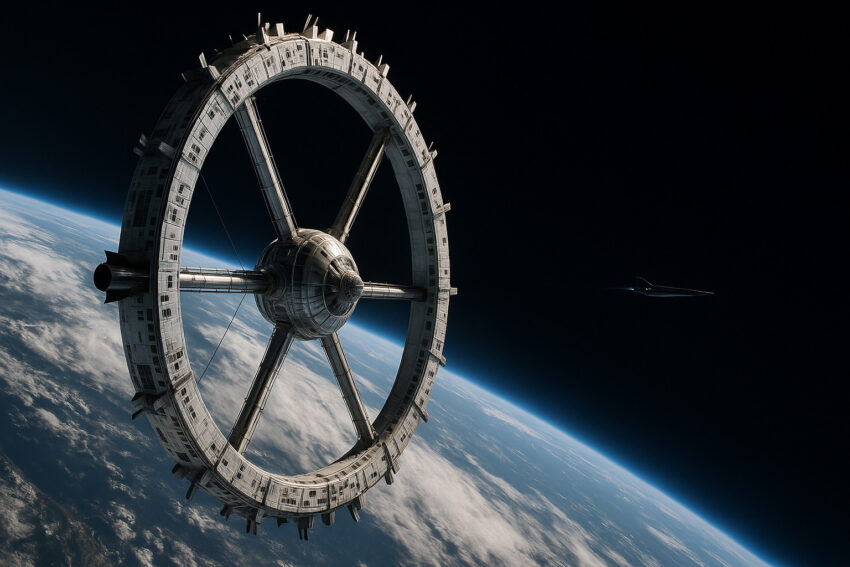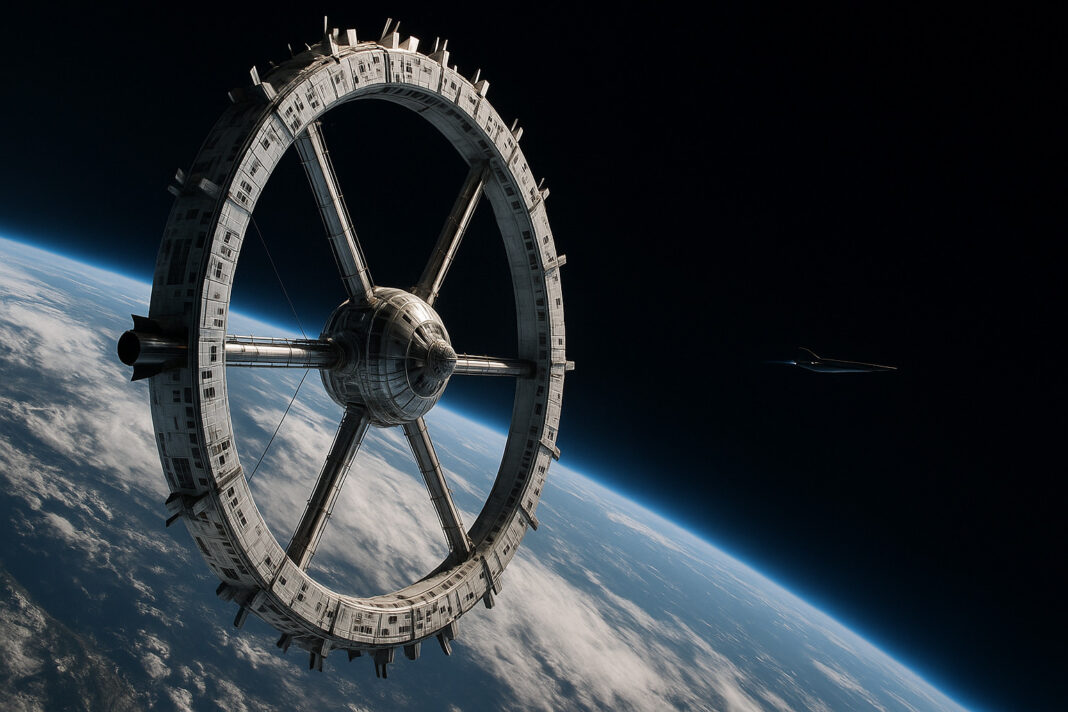Monday, June 2, 2025

The dream of vacationing in space is no longer science fiction. Voyager Station, the world’s first dedicated luxury space hotel, is slated to open its doors in 2027, marking a historic milestone in space tourism. Designed by the Orbital Assembly Corporation (OAC), this state-of-the-art orbital resort aims to transform space travel from an exclusive privilege for billionaires into a widely accessible luxury vacation experience.
Unlike brief suborbital flights currently offered by companies like Blue Origin and Virgin Galactic, Voyager Station will provide an extended stay in orbit. It is meticulously engineered to accommodate up to 400 people—280 guests and 112 crew members—in a spacious, rotating structure that simulates Earth-like gravity. This advancement not only enhances comfort but also enables guests to engage in everyday activities with ease, a breakthrough in the commercial space travel industry.
Voyager Station promises a unique blend of luxury, technology, and breathtaking views, offering an array of amenities tailored for both leisure and adventure. This article provides an in-depth look at Voyager Station’s design, features, accessibility, and the broader impact it will have on tourism and space travel.
What Is Voyager Station? An Overview
Voyager Station is a commercial space hotel designed to orbit Earth, developed by Orbital Assembly Corporation based in California. It leverages cutting-edge aerospace technology combined with hospitality expertise to create an extraordinary destination in Low Earth Orbit (LEO).
- Capacity: 280 guests + 112 crew members
- Opening Year: 2027
- Orbital Location: Low Earth Orbit (LEO)
- Design: Rotating wheel to simulate artificial gravity
- Total Area: Approximately 125,000 sq. ft. spread across 24 modules
- Gravity Level: Starting with lunar gravity, adjustable toward Earth gravity
The station uses centrifugal force generated by rotation (around 1.5 rotations per minute) to mimic gravity, providing a more natural and comfortable experience than previous space tourism ventures.
Why Voyager Station Is a Game-Changer for Space Tourism
1. Extended Luxury Stays in Space
Current commercial space tourism is limited to short suborbital hops lasting minutes. Voyager Station redefines this by enabling guests to stay in orbit for days or even weeks, enjoying a full resort experience.
2. Artificial Gravity for Guest Comfort
Artificial gravity is critical to overcoming the physical challenges of long-duration weightlessness. The rotating design provides gravity levels initially comparable to the Moon, which helps prevent muscle and bone loss while enhancing comfort.
3. Tailored Amenities for a Premium Experience
Unlike scientific space stations, Voyager Station focuses on hospitality and recreation, featuring specialized facilities that blend luxury with the unique advantages of the orbital environment.
The Design: A Space Hotel Like No Other
Voyager Station’s architecture draws inspiration from the visionary work of aerospace pioneer Wernher von Braun, who first conceptualized rotating space habitats in the 1950s. Today, OAC is bringing this concept to life with modern technology.
Key Features of Voyager Station’s Design:
- 24 Modular Units: Each module serves a unique purpose—accommodation, dining, recreation, research, or hospitality.
- Circular Rotating Structure: Creates centrifugal force for artificial gravity.
- Central Zero-Gravity Hub: A non-rotating area where guests can experience weightlessness before moving to gravity zones via elevators.
- Observation Decks: Offering panoramic, unobstructed views of Earth.
- Specialized Facilities: Including a gym, concert hall, cinema, and restaurants adapted for microgravity and artificial gravity environments.
Module Highlights:
| Facility | Description |
|---|---|
| Restaurant & Bar | Space-themed gourmet cuisine with views of Earth |
| Concert Hall | Zero-gravity musical performances and immersive shows |
| Gym | Fitness equipment leveraging low gravity advantages |
| Cinema | Films and immersive space-themed entertainment |
| Observation Decks | Panoramic windows with breathtaking Earth vistas |
How Guests Will Reach Voyager Station
Voyager Station will be accessible via launches from Kennedy Space Center (KSC), using advanced reusable rockets such as SpaceX’s Starship or Blue Origin’s New Glenn. The logistics are designed to provide seamless transfers from Earth to orbit.
Guest Journey Overview:
- Pre-Launch Training: Basic astronaut readiness and health checks.
- Launch Vehicle: Commercial heavy-lift rockets capable of reaching Low Earth Orbit.
- Docking: Guests arrive through a pressurized central docking hub.
- Transfers: Pressurized transfer shafts and elevators connect the docking hub to the various hotel modules.
Pricing and Market Accessibility
Currently, space travel is prohibitively expensive and mostly limited to wealthy individuals. For example, Oliver Daemen’s Blue Origin ticket cost $28 million for a short suborbital flight. Voyager Station’s aim is to reduce these costs substantially and position space travel as a competitive alternative to luxury cruises.
Pricing and Access Insights:
- Initial Pricing: Likely remains in the high luxury tier, reflecting launch costs.
- Long-Term Goal: Achieve pricing similar to high-end cruise vacations within a decade.
- Real Estate Options: Voyager Station will offer leasing opportunities for private villas, commercial spaces, and research facilities, mimicking terrestrial luxury developments.
- Technological Advances: As rocket reuse and launch efficiencies improve, travel costs are expected to fall.
Competitive Landscape and Industry Outlook
Voyager Station leads the space hospitality niche but is part of a broader commercialization of Low Earth Orbit.
Key Competitors:
- Axiom Space: Partnered with NASA to develop commercial modules on the ISS with future independent stations.
- Orbital Reef: A multi-use commercial station developed by Blue Origin and Sierra Space, targeting mixed research and business use.
- NASA: Facilitating commercial partnerships for station expansion and infrastructure.
Voyager Station differentiates itself by focusing exclusively on tourism, hospitality, and entertainment rather than research or corporate functions.
Development Milestones and Timeline
To ensure success, OAC is deploying smaller prototypes prior to the full hotel launch:
- 2025: Launch of Gravity Ring and Pioneer Station prototypes to validate rotating artificial gravity systems.
- 2026: System integration and final testing.
- 2027: Official launch and commencement of Voyager Station operations.
Challenges Ahead
While the project’s technology is sound, there remain significant hurdles:
- Funding: The project requires billions in investment.
- Logistics: Ensuring reliable and safe transport to orbit.
- Regulatory: Navigating international space law and environmental concerns.
- Sustainability: Managing waste, energy supply, and orbital debris.
Despite these, OAC remains optimistic, confident that time and capital will bring Voyager Station to life.
The Impact: What Voyager Station Means for Travel and Beyond
Voyager Station represents a monumental shift:
- For Tourism: Opens a new frontier for luxury travel, blending adventure and comfort.
- For Technology: Advances in space habitat design and sustainability.
- For Culture: Inspires a global audience about the future of human presence in space.
- For Economy: Creates new markets in space real estate, hospitality, and entertainment.
This station is a precursor to broader human activity beyond Earth, signaling the start of a future where space tourism becomes a normal part of life.
Summary: The Dawn of Mainstream Space Hotels
Voyager Station is poised to become the first luxury space hotel in orbit, offering a blend of artificial gravity, breathtaking views, and five-star amenities to hundreds of guests. Its launch in 2027 will transform space tourism, making orbital vacations accessible to a broader market and inspiring new possibilities for how we explore and inhabit space.
With continued technological innovation and strategic partnerships, Voyager Station is not just a hotel—it’s a glimpse into the future of travel where Earth’s boundaries give way to cosmic horizons.
Tags: Artificial gravity space station, Commercial space station tourism, First space hotel 2027, Hotel News, luxury space tourism, Orbital space hotel, Space hotel amenities, Space tourism, Space travel vacations, Tourism news, Travel, travel industry, Travel News, Voyager Station space hotel



